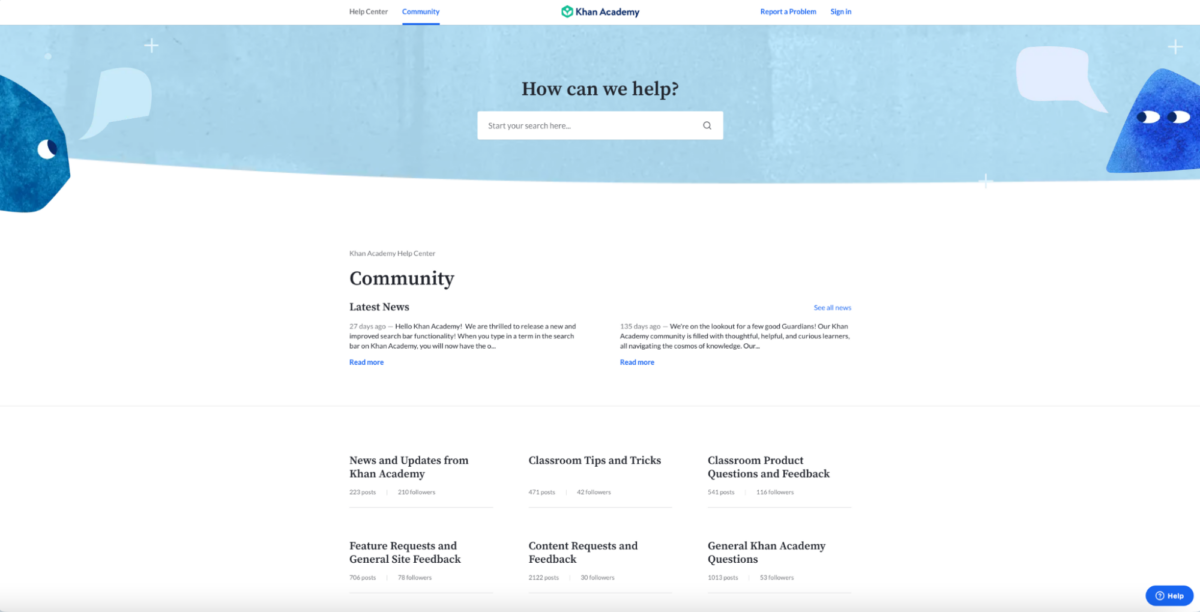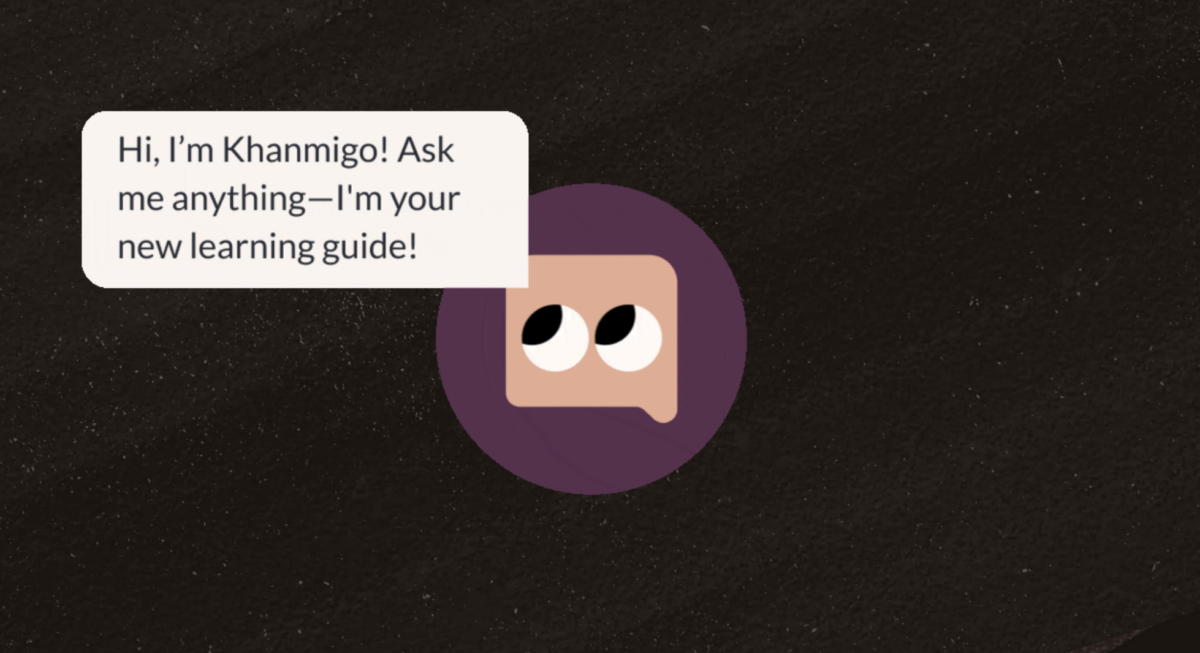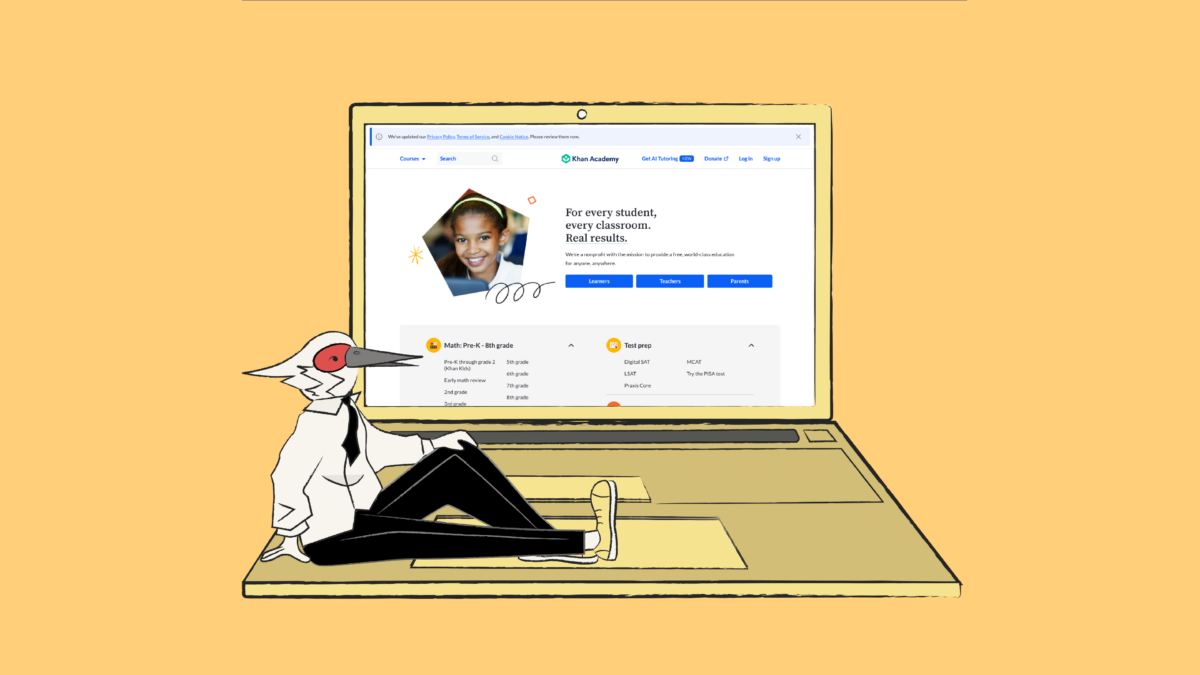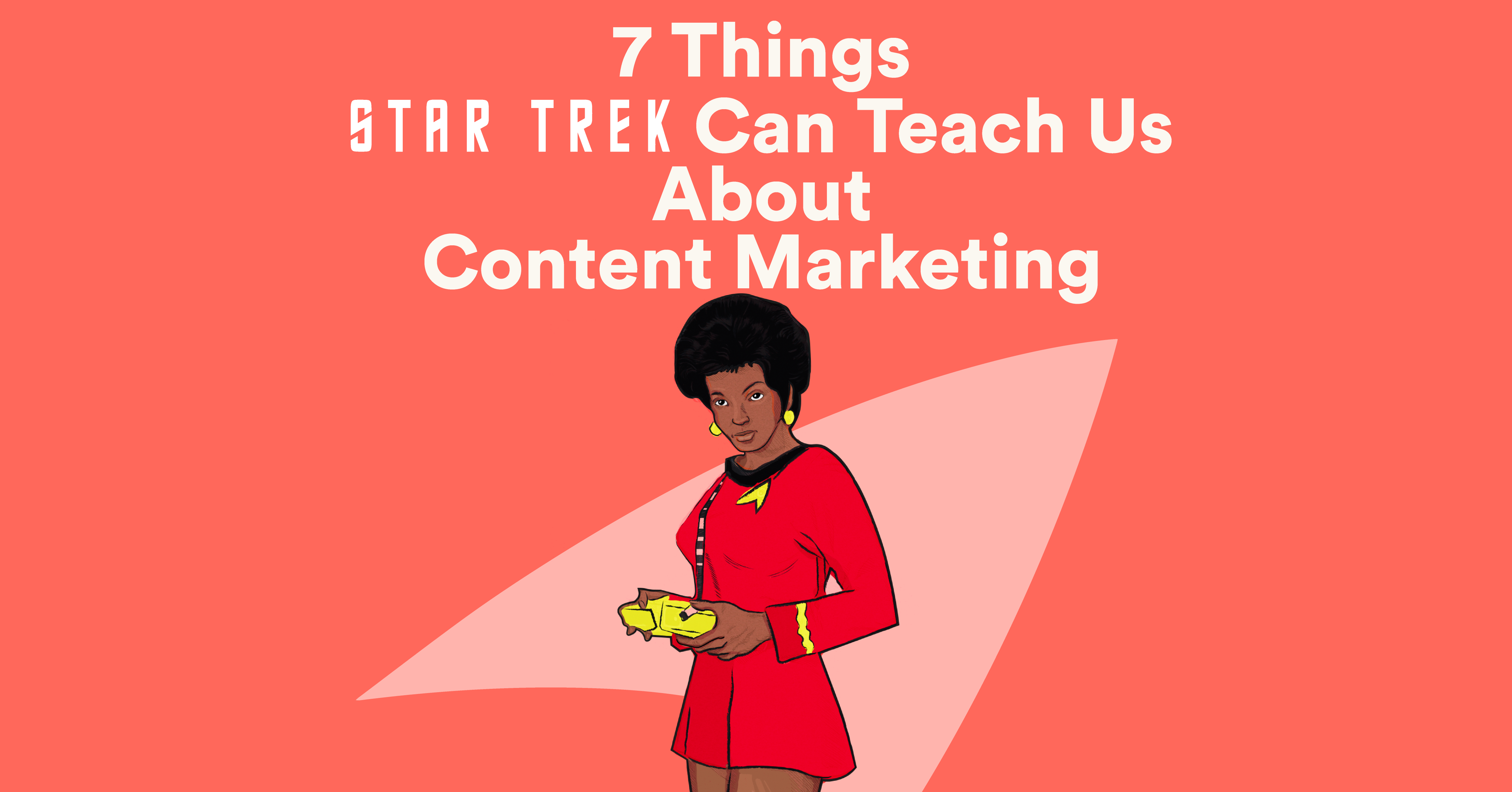Founded in 2008 by Sal Khan, the Khan Academy is a nonprofit on a mission to “provide a free, world-class education for anyone, anywhere,” with an emphasis on accessibility and inclusivity.
The story of the Academy began when Khan started tutoring his cousin; since then, it has grown into one of the world’s largest nonprofit edtech platforms, providing free Pre-K through college curricula in over 50 languages to over 140 million users in 190 countries.
Since its humble beginnings, it has gone on to generate an annual revenue of more than $221.5 million, teacher and student registration on the platform has grown six times, parent registration has increased 20 times, and over 30 million people visit the Academy’s website each month.
Clearly, the Khan Academy has a thing or two to teach us all about successful edtech marketing, and its marketing playbook is a treasure trove of insights for anyone looking to make an impact in the educational technology sector.

In this blog post, we’ll delve into the key strategies driving the Academy’s success, exploring how the organization has harnessed digital marketing, social media, and strategic partnerships to build a global community of learners and educators.
Whether you’re a startup, an established edtech company, or just curious about the mechanics of successful online marketing, there’s much to learn from Khan Academy’s journey.
So, let’s dive in and uncover the strategies that have made this nonprofit a star in the world of online education.
1. Brand messaging
Brand messaging refers to the core ideas, values, and language a company uses to communicate its identity, purpose, and the benefits of its products or services to its target audience.
It’s a strategic way of storytelling that connects your brand with your customers, creating a consistent and compelling narrative across all marketing and communication channels.
In the edtech sector, brand messaging is particularly crucial for several reasons. Let’s take a look at six of the most important and how Khan Academy achieves them.
1. Differentiation
Khan Academy’s message of providing “a free, world-class education for anyone, anywhere” sets it apart in a market often dominated by paid services.
This unique proposition highlights the organization’s commitment to accessibility and inclusivity, differentiating it from other educational platforms that might focus more on premium or specialized content.
2. Trust and credibility
The Academy’s focus on offering high-quality, research-backed education — often aligned with standard curriculums — builds trust and credibility among potential and current users.
By positioning itself as an ally in the global educational landscape, Khan Academy appeals to parents, teachers, and students who are looking for reliable and authoritative educational resources.
Additionally, the organization has formed strategic partnerships with school districts and renowned education providers to further strengthen its credentials (more on this later).
3. User engagement and loyalty
Khan Academy’s messaging focuses on the platform’s ease of use and personalization of learning. By emphasizing its adaptive learning features and a wide range of subjects, it encourages long-term engagement from its users, while the message that users can learn at their own pace fosters a sense of control and loyalty among learners.

4. Clear purpose and values
Khan Academy’s purpose and values are clear — offering free education to anyone, anywhere.
This strong, mission-driven message resonates with users who value educational equity and access while positioning Khan Academy as a philanthropic entity that offers an alternative to other, more inaccessible, institutions.
5. Market positioning
Khan Academy’s messaging positions it as a comprehensive educational resource suitable for a wide range of learners — from pre-K to college students.
This broad appeal helps it cater to a diverse user base, including self-learners, educators, and students seeking supplemental learning resources.
6. Driving growth
The emphasis on free, high-quality education appeals to a global audience, driving user acquisition and retention. By positioning itself as a key player in reducing educational barriers, Khan Academy attracts partnerships, donations, and a community of volunteers, contributing to its growth and sustainability.
2. Strategic partnerships
Strategic partnerships in edtech can bolster a solid marketing strategy and contribute to an organization’s success. Khan Academy has created and nurtured a number of strategic partnerships that boost its credibility while enabling it to provide students with diverse, world-class offerings.
For instance, the Academy’s partnership with more than 100 U.S. school districts during the pandemic is a prime example of how strategic collaborations can enhance credibility and trust.
This partnership aimed to support education during a critical time, offering personalized learning opportunities that were invaluable for students adapting to remote learning environments. This kind of collaboration expanded Khan Academy’s reach while reinforcing its reputation as a reliable educational resource.
Another example is Khan Academy’s joint venture with NWEA to develop the MAP® Accelerator™, a partnership that illustrates the benefit of resource sharing and enhancing product offerings.
This personalized learning tool integrates NWEA’s MAP Growth Assessments with Khan Academy’s resources to make it easier for teachers to create personalized learning pathways for students.
The initiative demonstrates how partnerships can lead to the development of innovative solutions that directly address students’ learning needs.

In addition, Khan Academy’s focus on improving STEM learning in historically under-resourced communities highlights how strategic partnerships can be tailored to address specific educational gaps or needs.
By concentrating on underserved areas, Khan Academy is working to reduce educational disparities, strengthening its brand as an advocate for accessible education for all.
Furthermore, a wide range of partnerships with other educational institutions have expanded Khan Academy’s market reach and awareness.
Collaborating with high-profile organizations like the California Academy of Sciences, the American Museum of Natural History, NASA, and NOVA Labs has allowed Khan Academy to tap into these institutions’ audiences, further spreading its educational resources.
3. High-quality, accessible content
You’ve heard that expression about “putting lipstick on a pig?” Well, that’s a bit what trying to market a subpar product is like.
The truth is, the secret to a successful marketing strategy begins with a quality product that fulfills real needs. Khan Academy understood this from the beginning and set out to create high-quality educational content that’s accessible to all.
And it worked — multiple studies have highlighted the platform’s effectiveness, including one that concluded that “every minute spent on Khan Academy can lead to learning gains.”
These findings are corroborated by the 2018 ConStat U.S. Online Education Customer Survey: 85 percent of first and second-year college students who used Khan Academy believed it aided in their college readiness.
The importance of high-quality, accessible content in Khan Academy’s marketing strategy is evident in several key areas, as demonstrated by the statistics from its 2022–23 annual report.
1. Expert content creation involving educators and experts
Khan Academy collaborates with educators and subject matter experts to create high-quality educational content. This approach ensures the materials are both accurate and pedagogically sound.
According to the annual report, more than 50 research studies have confirmed the effectiveness of Khan Academy, and its expert contributors undoubtedly contribute to its proven track record in student success.
2. Clear and concise explanations
The platform is known for its ability to distill complex concepts into clear, understandable language. This clarity is crucial for learners of all ages and backgrounds and makes challenging subjects approachable.
This accessibility is one of the reasons why a significant portion of learners exceeded their pre-pandemic growth expectations after using Khan Academy for 30+ minutes a week, as noted in the annual report.
3. Microlearning approach
By breaking down complex topics into bite-sized content, Khan Academy makes learning more manageable and less overwhelming. This microlearning approach fits into the busy schedules of learners and allows for more flexible learning opportunities.
Together, learners have spent a cumulative 1.2 billion minutes on Khan Academy Kids — highlighting the effectiveness of this approach, as it suggests high engagement levels with the platform’s content.
4. Multilingual content
Khan Academy’s ability to offer content in multiple languages greatly increases accessibility for a broader audience and contributes to its widespread use and global success.
By not being limited to English, Khan Academy can reach non-English speaking learners, thereby fulfilling its mission of providing education to anyone, anywhere.

5. Comprehensive coverage
Khan Academy covers a wide array of subjects, catering to different learning levels from kindergarten to early college. This comprehensive coverage ensures learners have access to a complete educational pathway.
Such extensive subject matter availability is likely a factor in why a large percentage of college students found Khan Academy to be beneficial for their college readiness.
4. SEO content
SEO content — such as blogs, testimonials, infographics, landing pages, product pages, and ebooks — is essential for edtech brands. It helps establish authority and expertise, improves search engine visibility, and provides a platform for engaging with the audience.
Khan Academy’s blog covers a range of topics for different audiences, including industry news, resources for educators, educational content for learners, and company and product updates. Additionally, testimonials can be found throughout the website, lending more credibility to the brand.

Much of the content on the organization’s blog is then repurposed across a number of channels, which we’ll discuss in more detail in the following sections.
This approach to distribution ensures Khan Academy’s content is seen by varied audiences and contributes to building a community around the brand.
5. Use of video
There are an estimated 3.5 billion digital video viewers worldwide as of the end of 2023, a figure that’s expected to continue growing. If you’re not using video marketing, you’re missing out on the chance to take a piece of that enormous pie.
Those who are using video as part of their content marketing strategy are repeating the rewards: video marketers get 66 percent more qualified leads per year than those who don’t use video in their marketing strategy.
Research by Wyzowl shows that 91 percent of users want to see more video content from brands, and eight out of 10 people have purchased an app or piece of software after viewing branded content.
In edtech, there are almost endless possibilities for creating video content that provides value to your audience and raises brand awareness and trust, including:
- Product demos
- Customer testimonials
- Educational content
- Behind-the-scenes tours
- Explainer animations
- Webinars and live Q&A sessions
- Impact stories
- Tutorials and how-to guides
- Influencer collaborations
- Comparison videos
- Virtual tours of educational institutions
- Case studies
- User-generated content (UGC)
Video tutorials are the core of Khan Academy’s content. These videos feature a conversational tone and simple, direct explanations, making complex topics more understandable. The use of visuals, drawings, and animations in videos enhances understanding, especially in subjects like math and science.
However, Khan Academy has also built a strong social media presence, particularly on YouTube, where it has 8.2 million subscribers and posts educational videos that range from vocabulary lessons to accessible descriptions of scientific concepts.
The Academy also has a decent following of 20.7 thousand on TikTok, where it posts the kind of short, snappy content that performs well on the platform.
Incorporating a variety of video content into your marketing strategy can be a game-changer in the rapidly evolving world of edtech, helping you connect with a vast and increasingly video-hungry audience.

6. Social media
YouTube and TikTok aren’t the only channels where Khan Academy is succeeding with its content marketing efforts — it’s also active on several other major platforms, including:
- Facebook: 1.6 million followers
- Instagram: 281 thousand followers
- X: 796 million followers
- Pinterest: 9 thousand followers
- LinkedIn: 148 thousand followers
Khan Academy uses different kinds of content and tactics to meet the preferences of users on each platform. For instance, on Facebook, Khan Academy repurposes blog posts as conversation starters to foster discussion among its community members.
Over on Instagram, the focus is on visual content that’s a mix of educational posts, giveaways, product updates, and Reels, while on Twitter, the organization reposts tweets from industry leaders, shares blog content, and repurposes some of its video content from other platforms.

On Pinterest, Khan Academy pins its content from across its various channels, while on LinkedIn, it takes a more professional approach, addressing an audience of teachers.
Khan Academy’s social media is focused on sharing educational resources, video tutorials, and informational content and providing tips, study guides, and motivational content to support learners.
This differentiated approach across various social media platforms, tailoring content to the unique preferences and user behaviors of each, contributes to its widespread success and ability to reach and engage diverse audiences.
7. Interactive learning tools
In edtech, interactive learning tools help boost student engagement and adherence by transforming traditional learning methods into dynamic, collaborative experiences.
These tools facilitate a more involved and personalized approach to learning, enabling students to actively participate and engage with the content, which is directly correlated with improved academic outcomes.
For example, after each Khan Academy video, students can complete exercises to reinforce learning and solidify the concepts learned in the videos. The platform provides immediate feedback on these exercises, aiding in quicker understanding and correction of mistakes than a human tutor could provide.
8. Personalized learning experience
Personalized learning experiences are essential in edtech for several reasons. First and foremost, they cater to individual learning styles, adapting content to suit various preferences and speeds for more effective understanding and retention of knowledge.
Additionally, personalized learning improves student engagement and motivation. When students find the learning content relevant and aligned with their interests, they are more likely to be actively involved, enhancing their learning experience and fostering a deeper connection with the subject matter.
Moreover, personalized learning experiences are adept at identifying and addressing specific learning gaps. By offering tailored support and resources, these experiences can help students overcome individual challenges, leading to a more comprehensive understanding of subjects.
This targeted approach has been linked to improved academic performance, as students tend to grasp concepts more efficiently and achieve better results when learning is aligned with their personal needs.
Furthermore, personalized learning promotes independence and self-directed learning, essential skills in the modern educational landscape. It also increases accessibility, making education more inclusive for students from diverse backgrounds and abilities, including those with disabilities.
Khan Academy puts these concepts into practice by adapting to each learner’s level, offering practice exercises that are tailored to their current understanding.
Additionally, students can track their progress, identify areas where they need more work, and receive recommendations for videos and exercises based on their performance.
9. Gamification elements
Gamification in edtech enhances the learning experience by incorporating game-like elements into educational content, making it more engaging and interactive. This approach can boost motivation and engagement among learners, making the learning process more enjoyable and effective.
Khan Academy effectively uses gamification in several ways:
1. Points and badges
Khan Academy awards points for watching videos, completing practice exercises, and achieving mastery in different topics. These points serve as a form of instant recognition for the learner’s efforts, but they can also use them to upgrade their avatars.

Additionally, learners can earn badges for various accomplishments, like mastering a certain number of skills or completing challenges. These badges act as a tangible representation of their achievements, motivating learners to continue their educational journey.
2. Progress tracking
The platform uses a progress tracking system and a visual representation that resembles a game level-up system that encourages learners to continue their journey by showing clear progress in their learning path.
The more they learn and practice, the more progress they see, which in turn can motivate them to keep going.
3. Interactive exercises and quizzes
Khan Academy’s practice exercises and quizzes use elements common in games, such as instant feedback, hints, and the opportunity to try again, which enhance the learning process, keep students engaged, and help reinforce the learning material.
4. Personalized learning paths
Though not strictly a gamification element, the personalized learning paths offered by Khan Academy add to the game-like experience. Learners can choose their own path based on their interests and needs, much like choosing a game level or character, which makes the learning experience more tailored and engaging.
10. Teacher and parent tools
Teacher and parent tools play crucial roles in enhancing the educational experience for edtech users.
For teachers, these tools provide resources for lesson planning, student progress tracking, and personalized instruction, allowing for more efficient and effective teaching.
Teachers can use Khan Academy as a supplement to classroom teaching, assigning videos and exercises as homework and tracking student progress.
Meanwhile, for parents, these tools offer insights into their child’s learning progress, educational resources for at-home support, and means of communication with teachers.
With Khan Academy, parents can monitor their child’s progress and support their learning, fostering a more holistic educational environment.
Both sets of tools foster a collaborative environment between educators and families, ensuring a more integrated and supportive educational journey for students.
11. Community engagement features
Community engagement tools enhance the learning experience by fostering collaboration, peer learning, and a sense of community among users. Examples of such tools include:
- Discussion forums
- Social media integration
- Collaborative workspaces
- Live chat and messaging
- Peer review systems
- Parent-teacher communication portals
Khan Academy offers a community forum where students can ask questions and get help from others, creating a collaborative learning environment.

12. Continuous improvement and AI integration
Edtech is a constantly evolving and highly competitive sector, so it’s essential for edtech platforms to strive for constant improvement and innovation while keeping up with the latest advancements in tech.
Khan Academy regularly updates its content and platform based on user feedback and new educational research, ensuring that its offerings remain relevant and effective.
Additionally, the platform recently launched Khanmigo, its AI assistant powered by ChatGPT4 that acts as a tutor for learners and an assistant for teachers.

For learners, Khanmigo provides clear and empowering guidance without directly giving answers, acts as a writing coach, and makes learning computer science more accessible with interactive experiences and real-time feedback.
For educators, Khanmigo aids in lesson planning and offers insightful student feedback, saving valuable time.
Khanmigo is both a handy tool that improves the platform’s user experience and an innovative use of generative AI that solidifies Khan Academy’s position as an industry leader.
Khan Academy: blending brand power with educational excellence
Khan Academy’s marketing strategy is a comprehensive approach that combines strong brand messaging, strategic partnerships, and high-quality, accessible content with a smart multichannel content strategy and AI integration.
By addressing various aspects of educational needs, marketing, and tech — from engaging learners and educators to leveraging the latest technological advancements — Khan Academy achieves an appeal that is both broad and highly personalized.
The result? A global community of committed learners accessing world-class educators and content — for free.










